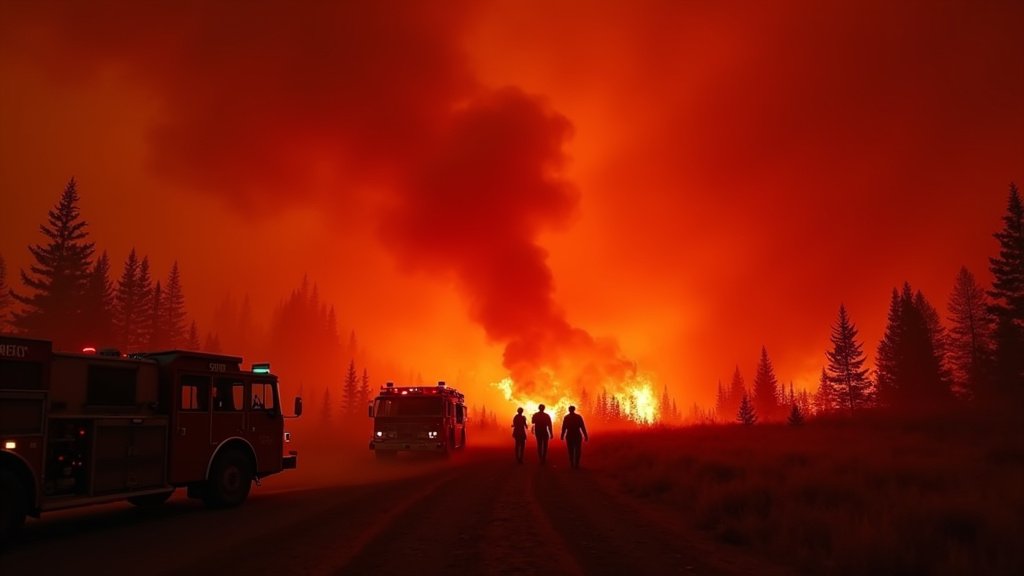Oregon Governor Tina Kotek declared a state of emergency on Wednesday, prompted by the escalating wildfire threat linked to “extreme high temperatures” forecast for the Northwest. This executive order mobilizes both state and federal resources to address wildfire prevention and response efforts. The emergency declaration follows six previous emergency declarations issued over the past two weeks, specifically addressing individual fires, many of which are concentrated in southern Oregon. The statewide emergency will remain active until the fire danger subsides, the fire season concludes, or the end of the year is reached.
Background of the Emergency
Governor Kotek emphasized the urgency of the situation, stating that Oregon is currently experiencing a devastating wildfire season. She warned of the increasingly dangerous conditions predicted for the summer due to higher temperatures and drier conditions. This declaration is a proactive measure aimed at mitigating the impact of what is shaping up to be a particularly challenging fire season.
Mobilization of Resources and Interagency Collaboration
The governor’s declaration mandates state agencies and the National Guard to cooperate on wildfire response and prevention strategies. This collaborative approach includes the sharing of personnel, equipment, and other essential resources. Such a coordinated effort is designed to maximize efficiency and effectiveness in tackling the widespread threat of wildfires.
Current Wildfire Situation
The majority of active fires are currently concentrated in southern Oregon. This regional focus necessitates the allocation of resources to that area. The fires pose significant risks to communities, infrastructure, and natural resources. Authorities are closely monitoring these blazes, and the newly declared state of emergency provides additional support for containment efforts.
Public Safety and Preparedness
In conjunction with the declaration, Governor Kotek urged Oregonians to register for the OR-Alert system. This statewide emergency alert system delivers critical information and updates to residents, providing them with essential information regarding the evolving wildfire situation and any associated risks. This proactive communication strategy is crucial for informing the public and ensuring they are prepared for potential emergencies.
Expected Impact of Extreme Temperatures
The primary catalyst for this emergency declaration is the anticipated “extreme high temperatures.” These elevated temperatures contribute to dry conditions, which can rapidly accelerate the spread of wildfires. Moreover, heat stress can place additional strain on firefighting resources and the public alike. The declaration acknowledges the significant role that weather patterns play in wildfire risk.
Previous Emergency Declarations
The decision to declare a statewide emergency follows a series of six emergency declarations in the past two weeks. These declarations addressed individual fires, each representing a unique set of challenges. These prior declarations reflect the seriousness of the current wildfire season and the need for an overarching strategy.
Long-Term Consequences
Governor Kotek highlighted the potential for lasting consequences resulting from this wildfire season. Wildfires can have a significant impact on ecosystems, including the destruction of habitats and the release of pollutants into the atmosphere. They can also damage infrastructure and displace communities.
Role of State Agencies and National Guard
State agencies are actively involved in coordinating the response to the wildfires. The National Guard is also participating, providing essential personnel and equipment to support prevention and containment efforts. Their combined efforts will allow for comprehensive management of the crisis.
Looking Ahead
The state of emergency will persist until the threat diminishes, the fire season concludes, or until the end of the year. This indefinite timeframe underscores the persistent nature of the risk and the need for continuous vigilance. The declaration ensures that resources will remain available to address emerging challenges throughout the fire season.
Statewide Preparedness
The state of emergency serves as a reminder of the importance of statewide preparedness. Residents and authorities must work together to prevent fires and respond effectively when they do occur. The combination of governmental resources and public awareness is essential to minimizing the damage associated with wildfires.
Prevention and Response Strategies
The declaration prioritizes both wildfire prevention and response strategies. This comprehensive approach includes measures to reduce the risk of fires, such as promoting responsible behavior and enforcing regulations. The state also has plans for immediate response, including the rapid deployment of firefighting resources.
Regional Focus
Southern Oregon remains a major focus for these efforts due to the concentration of active fires in the region. The resources are carefully allocated to address the most pressing needs. Close coordination between state, local, and federal agencies is key to manage the escalating crisis.




